Art on Loan
One senses that the ante has been upped in the deal-making world of art loans. Quite a few “first-and-only-time” loans have been made this year.
A conspicuous example has been the traveling exhibition of three panels and several smaller pieces of Lorenzo Ghiberti’s Gates of Paradise, which are in the midst of a nearly year-long journey from their home in Florence’s Museo dell’Opera del Duomo to the High Museum of Art in Atlanta, the Art Institute of Chicago, the Metropolitan Museum of Art in New York, and the Seattle Art Museum, the last of these a late addition after intensive lobbying. Much hyped is the rarity of the exhibition, presented as the only time they will travel outside of Florence, due to the undeniable risks posed. A curator at the Art Institute has commented, “Sculpture doesn’t travel well, in general, and so the fact that three of the panels from the Gates can travel at all is remarkable.”
Regardless of the educational and altruistic rhetoric, that these are works that are traveling to offer an unprecedented opportunity for people to study and learn about certain treasures, the reality is that objects are being moved primarily for economic reasons, whether they be international or local. While the entire Ghiberti tour has been seen, undoubtedly somewhat simplistically, as reciprocal arrangement following the donation of funds by the U.S. group Friends of Florence for the restoration of the doors, there are local benefits as well. In the case of the Seattle stop, at least one local hotel is offering the “Gates of Paradise Package.”
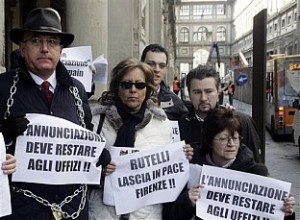 Perhaps an even more impressive deal was made by British Museum to secure the loan from China of twenty terracotta statues of the warriors of the first Chinese emperor, Qin Shihuangdi, dating to the third century BCE. The twenty are just a small fraction of the 1000 figures that were unearthed in 1974 – about 7000 still await excavation – but it is the largest amount of this material to ever leave China. Previous exhibitions in Germany and Austria were composed of copies only, though still drawing impressive crowds. The Chinese government has recently made claims that a current exhibition at the Hamburg Museum of Ethnology is made entirely of copies, and the museum has been forced to offer refunds to the 10,000 visitors who have seen the show since it opened in late November.
Perhaps an even more impressive deal was made by British Museum to secure the loan from China of twenty terracotta statues of the warriors of the first Chinese emperor, Qin Shihuangdi, dating to the third century BCE. The twenty are just a small fraction of the 1000 figures that were unearthed in 1974 – about 7000 still await excavation – but it is the largest amount of this material to ever leave China. Previous exhibitions in Germany and Austria were composed of copies only, though still drawing impressive crowds. The Chinese government has recently made claims that a current exhibition at the Hamburg Museum of Ethnology is made entirely of copies, and the museum has been forced to offer refunds to the 10,000 visitors who have seen the show since it opened in late November.
With the demand high and hype higher, the British Museum show, entitled The First Emperor: China’s Terracotta Army, is a guaranteed blockbuster. By mid-October it was announced that 200,000 tickets at $25 apiece had been sold, and by late November, tickets were sold out straight through February. The tremendous visibility of the show has also attracted a major corporate sponsor, Morgan Stanley. As a way of further validating their support, Morgan Stanley has made the analogy between their role in being the first to bring international investment services to China, and their role in bringing these statues for the first time from their native land.
And the show doesn’t stop here. After it completes its engagement in London, the terracottas and a collection of 120 objects in total will travel to the High Museum in Atlanta. And while the museums and the sponsors involved have gotten great benefit from the arrangement, China stands to benefit as well. Britain has sent three shows in return, and in addition to this exchange, China will undoubtedly see the added effect of stirring interest in Chinese culture in the wake of the Beijing Olympics in 2008.
Atlanta’s High Museum, which will host both of these shows, is setting the new standard for international art loans – they engineered not only “first-and-only” shipments of the Gates of Paradise and Andrea del Verrocchio’s David, but also made the partnership with the Louvre Museum in Paris to send a series of exhibitions to Atlanta, all following the High’s recent $85 million addition which doubled its space. And other museums are following suit, both nationally and internationally. Seattle Art Museum also recently doubled its special exhibition space – and like the High, has arranged to show rarely-shipped works from the Louvre’s collection early in 2008.
The Museo del Prado in Madrid likewise just opened their expanded space by Rafael Moneo, with an additional 237,000 square feet, at the cost of $219 million. The Prado remodeling will bring to light many works that have been languishing in storage. But at the same time, the project was driven by the desire to be a “world-class” institution in terms of attracting blockbuster exhibitions and large numbers of visitors, a record number of which are expected this year, as well as meeting the expectations that are now the norms for museum goers: restaurants, education rooms, and shops. In an effort to make-over their venerable institution, the Prado also sought “rebranding” by Studio Fernando Gutiérrez, which created for them a new logo, signage and a new marquee aimed at attracting commercial sponsorship and raising money for temporary shows.
Perhaps a less audacious loan in terms of scale, but noteworthy nonetheless for the rare stirring of opposition it caused, was the shipment of Leonardo da Vinci’s Annunciation, which resides in Florence’s Uffizi Museum, to Tokyo this past spring as the star attraction of the exhibition, The Mind of Leonardo – The Universal Genius at Work. The show was part of a larger promotional event called Primavera Italiana 2007, which had as its primary goal the promotion of Italian culture and business ventures in Japan. The loan was not without controversy, especially as it could potentially be viewed as violating a 2004 Italian law which forbids the loan of any object considered essential to its home institution. Although facilitated by the Italian Culture Minister, Francesco Rutelli, prominent critics included the director of the Uffizi Antonio Natali and Italian senator Paolo Amato, the latter of which staged a protest outside of the museum when it was moved.
But the issue is not just single, and supposedly, one-time instances of loans. Large-scale loans by some major institutions are becoming par for the course. The Vatican has recently announced its most substantial collection of objects ever be sent to the southern hemisphere, on a 2008 tour for the exhibition Vatican: The Story, The Art, The Architecture that will include the Auckland Museum in New Zealand and Sydney. As in the case of many recent blockbusters eager for the notion of exclusivity and a once-in-a-lifetime opportunity, the director of Auckland Museum has stressed that these works will probably never travel there again. The more than eighty objects, which include portraits by Titian and Bernini, as well as an early cast of Michelangelo’s Vatican Pietà, are of such value that they are requiring government insurance and a high level of security to guarantee their safety.
Other recent “firsts” include the current Van Gogh retrospective at the Seoul Museum of Art, Van Gogh: Voyage into the Myth, with sixty-seven works on loan from the Kroller-Muller Museum in Otterlo and Van Gogh Museum in Amsterdam. It is the first Van Gogh exhibition in Korea, and the largest Van Gogh exhibition held since the one marking the centennial anniversary of his death in 1990.

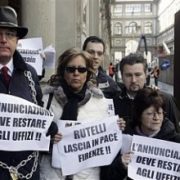
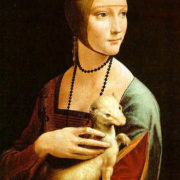



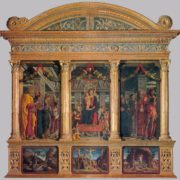

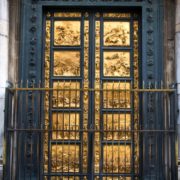



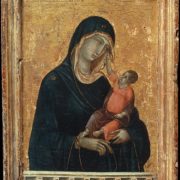

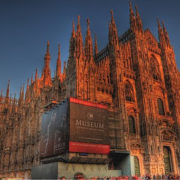

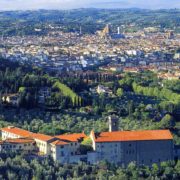

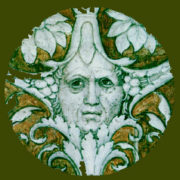

 Firenze, 20 giugno 2006
Firenze, 20 giugno 2006